Today was an opportunity to show Keat Sokly around Hong Kong before we went to the anniversary celebration for the Catholic deaf group. Click here to see places and activities in the morning.
Author: Charles Dittmeier
Hong Kong Trip — Friday
Click here to see pictures from Friday in Hong Kong.
Hong Kong Trip — Thursday
The Hong Kong Catholic Pastoral Association of the Deaf is celebrating their fortieth anniversary and invited me back to be part of it. Click here to see day one of the trip.
Pineapple Season
This past weekend the pineapple vendors were out on the streets again, another change in the seasons. IMHO, fresh pineapple bought on the street like this, is one of the best tasting fruits there is.
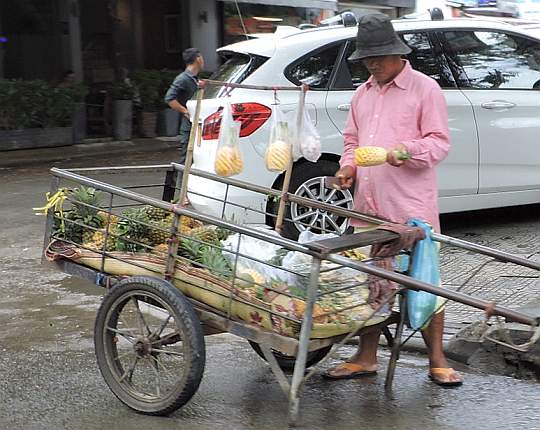
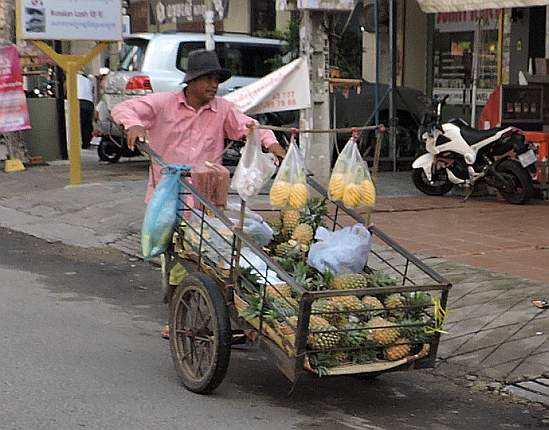

Notable Quotes
|
Remember that charity is no substitute for justice. Charity alleviates the effects of poverty while justice seeks to eliminate the causes of poverty. ~William Sloane Coffin |
Water Festival Preparations
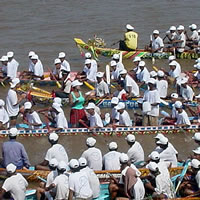
I had an unexpected trip back to the waterfront area today and encountered more preparations for the upcoming Water Festival. Click here to see what’s going on.
Water Festival Preparations
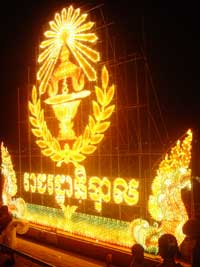 Every year the Water Festival takes place at the full moon in November. Approximately two million people come from the provinces to Phnom Penh to race and watch their local boats in the three days of boat races. The festival starts on Thursday but today, Sunday, many people were out preparing for the celebration to come. Click here to see the scenes along the Tonle Sap River.
Every year the Water Festival takes place at the full moon in November. Approximately two million people come from the provinces to Phnom Penh to race and watch their local boats in the three days of boat races. The festival starts on Thursday but today, Sunday, many people were out preparing for the celebration to come. Click here to see the scenes along the Tonle Sap River.
What do priests do?
A not-uncommon question to priests is “What do you do all day?” So many people see us only on Sunday when they come to mass and don’t have any idea about how we otherwise spend our time. Well, here’s what I did yesterday:
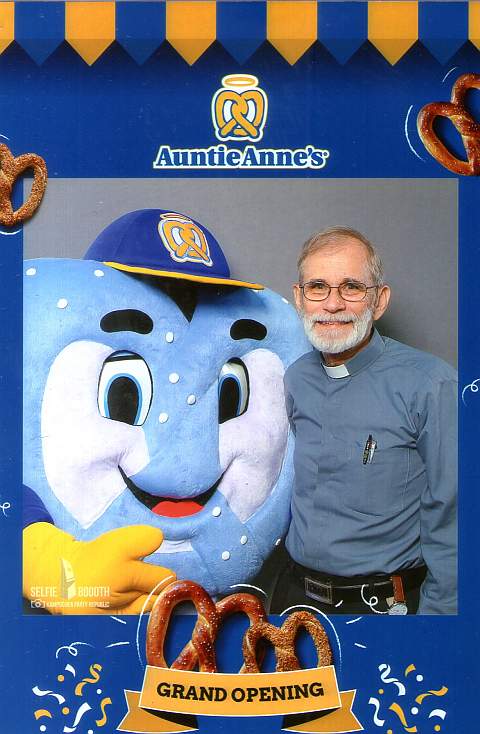
One of our parishioners opened the first Auntie Anne’s pretzel shop in Cambodia and asked me to offering a blessing during the grand opening–which I did. Then I got my picture taken with….is it “Mr. Pretzel”?
US Trip: Days 10-12
Every October the Board of Directors of the Maryknoll Lay Missioners meets at MKLM headquarters in Ossining, New York. Here is an account of the trip to New York and meetings and then on to Louisville for a visit with the family.
- Day 1: Travel to Bangkok
- Day 2: Travel to Ossining, New York
- Day 3: Assorted Meetings at Maryknoll
- Day 4: Preliminary Board Meetings
- Day 5: Official Board Meetings 1
- Day 6: Official Board Meetings 2 and Travel to Kentucky
- Day 7: Kentucky 1
- Days 8-9: Kentucky 2 & 3
- Days 10-11: Travel to Phnom Penh
US Trip: Day 8-9
Every October the Board of Directors of the Maryknoll Lay Missioners meets at MKLM headquarters in Ossining, New York. Here is an account of the trip to New York and meetings and then on to Louisville for a visit with the family.
- Day 1: Travel to Bangkok
- Day 2: Travel to Ossining, New York
- Day 3: Assorted Meetings at Maryknoll
- Day 4: Preliminary Board Meetings
- Day 5: Official Board Meetings 1
- Day 6: Official Board Meetings 2 and Travel to Kentucky
- Day 7: Kentucky 1
- Day 8-9: Kentucky 2 & 3
- Day 10-11: Travel to Phnom Penh